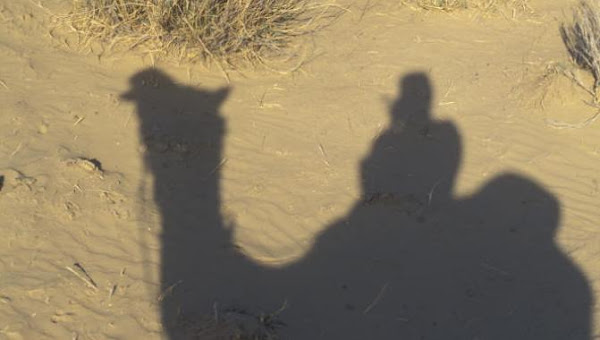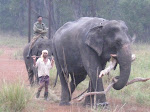One has to fly across the spectacular Great-Himalayan range to enter Leh, the capital of Ladakh, situated in the eastern part of Kashmir and home to Mahayana and Hinayana schools of Buddhism. Open to the outside world for less than three months every year and often referred to as `Little Tibet,' it has managed to retain it's raw natural beauty, tradition and culture. As I sit here `chewing' on my thoughts and typing on the keyboard, the saucer-shaped capital town of Leh must be basking in the early morning sunshine, it's rarefied mountain air charged with the smell of juniper, while lamas chant in incense-filled monasteries and prayer flags flutter in morning breeze. Silence dominates, more often than not, what I distinctly remember was the sound of footsteps.
Measuring close to 100,000 kms, the region of Ladakh is bordered by the Karokaram range of mountains in the north-west and the Great Himalayan range in the south- east. Eons ago, the highest landmass on Earth, comprising of Tibet and Ladakh was at the bottom of a vast shallow ocean, the Tethyan Sea, which separated the continent of Eurasia from the Indian subcontinent. Geophysical changes caused the oceanic shelf to rise and collide against the continental shelf, causing the formation of the Himalayas. Fossils found here are an amazing mix of sea life and tropical greenlands, with the fossil of the ichthyosaur, presumed to be a pre-historic sea animal confirming the region’s relationship with the sea.
On my next visit I decided to visit the Great Lakes of TsoMorari and TsoKar, situated at over 4500 metres in the Chumathang region, inhabited by Changpas (nomads or herdsman), yaks, pashmina sheep, ladakhi wild ass, brahminy kites, lammergier, and bar-headed geese. Altitude sickness began to slowly creep in as the air became rarer and our 4WD Jeep found the going tougher. Changpas roamed the area with their flock of sheep searching for fresh pastures and grazing land. The pashmina sheep they rear have the finest wool in the world, it's thickness measuring no more than 10 microns and whose renowned pashmina shawls woven by crafty weavers in neighbouring Srinagar can pass through a ring.
We spotted a rebo (tent made of yak hair) and stepped out to investigate. A Changpa dressed in a traditional `goncha' came out, and broke into a toothless smile. He invited us inside his smoke blackened tent for a cup of butter tea, affectionately referred to as `gur gur chai.' Overwhelmed by his offer, we refused. Simply because he would not have much to spare. He kept on smiling, our lack of language skills making it almost impossible to communicate with each other, though my now my dark complexioned face had given way to black, making me resemble a Changpa as well! The only visible difference. He had his `goncha,' I had my Levi (made-in-turkey) jeans. `Jullay,' we said and wished each other well. I've often wondered, what would happen if the Changpa arrived unannounced at my apartment, would I invite him over for a Carona or put the answering machine on?
Ladakh continued to intrigue me and I visited it yet again, to experience its Jekyll-n-Hyde type of weather, where because of the clear mountain air, the sun can sting with the ferocity of a jellyfish and the next moment when a cloud passes over, one can experience chillblains. By now I was familiar with a local travel agent and he welcomed us at the airport with a traditional scarf. I felt like I was the Prince of Gondal! We continued our wanderings and visited the last post of India - the Nubra Valley.
A lone sentry stood guard in an armed barrack at the last post. No private vehicles were allowed beyond this point, though, the army had unrestricted access on a dirt track that criss-crossed the barren plains. Further North in pristine splendour stood the world's highest battlefield - the Siachen Glacier. Only a few hours earlier I met a soldier, who was going to be transferred to this battlefield for a period of three months. I noticed the fright and fear in his eyes as he described the posting. `Not many survive,' he said. `Too harsh weather conditions, imagine fighting at 20,000 feet, where gangrene and frost-bite dominate.' I could sense the tears in his eyes as his voice began to lose momentum and the wind soon took over.
We stood staring at the row of mountains basking in the evening light. I imagined I heard gunfire, but there was none. Instead, I heard the sound of footsteps, the sound of feet stepping on gravel and loose sand. A lama was heading our way.














No comments:
Post a Comment